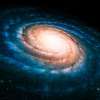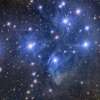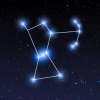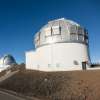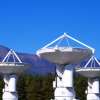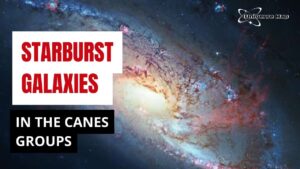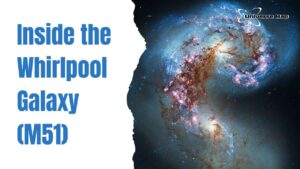Corona Borealis
The Northern Crown of Stars and Cosmic Secrets

Quick Reader
| Attribute | Details |
|---|---|
| Name | Corona Borealis |
| Type | Northern Hemisphere constellation |
| Latin Meaning | "Crown of the North" |
| Location in Sky | Between Hercules and Boötes |
| Right Ascension (RA) | ~15h 30m |
| Declination (Dec) | ~+30° |
| Visibility | Best viewed in Northern Hemisphere, April to August |
| Brightest Star | Alphecca (α Coronae Borealis) |
| Notable Deep Sky Objects | Corona Borealis Supercluster, Blazar (OJ 287), galaxy groups |
| Cultural Significance | Featured in Greek, Arabic, and Chinese star lore |
| Scientific Relevance | Hosts one of the richest superclusters and powerful AGNs |
Introduction: What Is Corona Borealis?
High above the Northern Hemisphere sky arches a faint but elegant semicircle of stars—Corona Borealis, the “Northern Crown.” While often overshadowed by its brighter neighbors Boötes and Hercules, this constellation holds a rich mix of mythology, star science, and cosmic structure.
Dating back to ancient Greek star charts, Corona Borealis was imagined as the crown of Ariadne, gifted by Dionysus. But beyond its classical beauty, modern astronomy has uncovered extraordinary features hidden in its direction, including:
One of the most densely packed galaxy superclusters
A rare blazar (OJ 287) that may harbor a binary supermassive black hole
Numerous galaxy groups and background quasars
Corona Borealis thus acts as a gateway—a symbolic crown in the sky, beneath which lie some of the universe’s most massive and mysterious structures.
Constellation Overview and Visibility
Shape and Pattern
Corona Borealis is a small arc-shaped constellation made up of seven main stars, forming a semicircular “crown.” Its shape is distinctive, though not particularly bright.
| Star Name | Bayer Designation | Magnitude | Notes |
|---|---|---|---|
| Alphecca | α CrB | 2.2 | Brightest star, an eclipsing binary |
| Nusakan | β CrB | 3.6 | Spectroscopic binary |
| γ, δ, ε, η, θ CrB | Various | 3.8–4.8 | Form the crown arc |
Sky Location and Best Viewing Months
Best seen in: Late spring to mid-summer (April to August)
Visible from: Most of the Northern Hemisphere
Adjacent Constellations: Boötes (west), Hercules (east), Serpens Caput (south)
Despite its subtle brightness, Corona Borealis can be easily spotted under dark skies due to its distinctive U-shape.
Alphecca – The Shining Jewel of the Crown
The most prominent star in Corona Borealis is Alphecca (α CrB), also known as Gemma, meaning “jewel.”
Key Characteristics:
| Attribute | Value |
|---|---|
| Spectral Type | A0V (white main-sequence star) |
| Apparent Magnitude | ~2.2 |
| Distance from Earth | ~75 light-years |
| System Type | Eclipsing binary |
| Companion Star | Yellow subgiant (~50-day orbital period) |
Alphecca is not only visually dominant but also scientifically significant—a bright, nearby binary whose eclipses have been carefully observed for decades. It also serves as an anchor point for navigation and celestial alignments in multiple cultures.
Corona Borealis in Mythology and Ancient Culture
Greek Myth: The Crown of Ariadne
In ancient Greek lore, Ariadne, daughter of King Minos of Crete, was abandoned by Theseus after helping him slay the Minotaur. She was later discovered by Dionysus, god of wine, who fell in love with her.
As a token of his love, Dionysus placed her crown in the heavens—Corona Borealis—where it still shines.
Arabic and Chinese Astronomy
In traditional Arabic star charts, the constellation’s stars were linked to a tent or necklace motif.
Chinese astronomers viewed the arc as part of the Heavenly Market Enclosure, associating the stars with imperial symbols and astrological roles.
Corona Borealis was thus interpreted across civilizations as an object of refinement and order, symbolic of regality and protection.
Beyond the Stars: Deep Space Objects in Corona Borealis
While small in visual size, Corona Borealis lies in a rich region of the sky containing several deep-sky objects and large-scale structures:
1. Corona Borealis Supercluster
One of the densest known galaxy superclusters.
Contains at least 7 major galaxy clusters, including Abell 2061, 2065, 2079.
Lies at a distance of ~1 billion light-years (z ≈ 0.07).
Central cluster Abell 2065 is particularly massive and X-ray luminous, indicating an ongoing merger event.
2. Blazar OJ 287
A unique active galactic nucleus (AGN) hosting a suspected binary supermassive black hole.
Emits powerful jets and radiation, with periodic outbursts every ~12 years.
Located ~3.5 billion light-years away, this object provides rare observational evidence for black hole mergers and gravitational wave behavior.
The Corona Borealis Supercluster – A Dense Cosmic Cityscape
Lurking in the direction of this elegant arc of stars lies one of the most compact and well-defined superclusters known: the Corona Borealis Supercluster. Though invisible to the naked eye, its impact on large-scale cosmic structure and galaxy dynamics is profound.
What Is a Supercluster?
A supercluster is a vast grouping of galaxy clusters and groups—the largest coherent structures in the cosmic web before the scale of unbound structures begins. These may span hundreds of millions of light-years and can contain tens of thousands of galaxies.
The Corona Borealis Supercluster stands out due to its dense configuration, lying at a redshift of z ≈ 0.07, or approximately 1 billion light-years away.
Key Members of the Supercluster
| Cluster Name | Abell Number | Distance (ly) | Notable Features |
|---|---|---|---|
| Abell 2065 | A2065 | ~1.03 billion | Central cluster; X-ray luminous; possible merger |
| Abell 2061 | A2061 | ~0.98 billion | Interacting with A2065; contains bright galaxies |
| Abell 2067 | A2067 | ~1.01 billion | Dense galaxy core |
| Abell 2079 | A2079 | ~1.02 billion | Secondary X-ray emitter |
| Abell 2089 | A2089 | ~1.03 billion | Rich galaxy population |
| Abell 2092 | A2092 | ~1.04 billion | Compact core, weak X-ray emission |
| Abell 2019 | A2019 | ~1.01 billion | Less massive, but part of the gravitational complex |
These clusters are gravitationally associated and appear to form a bridge-like structure within a narrow redshift range, suggesting a shared formation history and co-evolution over cosmic time.
X-Ray Observations and Merger Evidence
The Corona Borealis Supercluster is not just a visual grouping of clusters—it’s dynamically active. X-ray data, especially from ROSAT and Chandra observatories, show:
Strong emission from intracluster gas, especially in A2065
Hot gas filaments between A2061 and A2065, indicating cluster interactions
Substructure within clusters, possibly remnants of smaller merging groups
Such observations confirm that this supercluster is not in equilibrium. It is still forming, with clusters gravitationally pulling toward each other, potentially leading to a future collapsed structure—a supercluster core or massive single cluster.
Galaxy Distribution and Redshift Mapping
Using Sloan Digital Sky Survey (SDSS) data and other galaxy redshift surveys, researchers have created 3D maps showing that:
The member clusters lie in a thin plane ~100 million light-years across
There is a filamentary connection to neighboring structures, including Hercules Supercluster
The velocity dispersion within A2065 and its neighbors suggests gravitational binding
These maps not only identify the clusters, but also trace the motion of galaxies and dark matter, revealing mass flows and potential infall directions.
OJ 287 – A Blazar That May Host Binary Supermassive Black Holes
One of the most studied astrophysical objects in this direction is OJ 287, a type of AGN known as a blazar.
Key Facts About OJ 287:
| Attribute | Value |
|---|---|
| Type | Blazar (Active Galactic Nucleus) |
| Redshift | z ≈ 0.306 (~3.5 billion light-years away) |
| Host Galaxy | Giant elliptical |
| Jet Behavior | Highly variable, relativistic jets toward Earth |
| Unique Trait | Periodic optical outbursts every ~12 years |
These outbursts are believed to be caused by a binary black hole system, where a smaller supermassive black hole (~150 million solar masses) orbits a larger one (~18 billion solar masses), disturbing its accretion disk twice per orbit.
Why It Matters:
OJ 287 provides a natural laboratory for general relativity, especially gravitational wave emission from supermassive binaries.
It is one of the very few systems where orbital motion and flare predictions have matched actual observations over decades.
This makes it a time-domain goldmine, frequently observed by both optical telescopes and space-based X-ray/infrared observatories.
Star Formation and Galaxy Evolution in the Supercluster
Superclusters like Corona Borealis are more than mass concentrations—they’re evolutionary environments. Galaxies within this region show trends such as:
Morphology–density relation:
More elliptical and lenticular galaxies in core regions
More spirals at the periphery
Environmental quenching:
Star formation is suppressed in dense cluster cores
Galaxies are stripped of cold gas through ram pressure and tidal forces
AGN activity:
Enhanced in interacting zones
Observed in the form of radio-loud galaxies and low-luminosity AGNs
In short, the gravitational tides and hot intracluster medium help sculpt galaxies into quieter, redder, and more passive systems over time.
Unresolved Mysteries of the Corona Borealis Region
Despite extensive studies, the Corona Borealis region continues to raise compelling scientific questions—from galaxy evolution in dense environments to cluster merger dynamics and binary supermassive black hole behavior.
1. Is the Supercluster Gravitationally Bound as a Whole?
While individual clusters like Abell 2065 and 2061 are likely bound and interacting, the full Corona Borealis Supercluster may not be:
Simulations suggest it’s in a transitional phase—some clusters are collapsing toward a common center, while others may disperse over time.
Dark energy plays a key role in determining whether the structure will remain intact or dissolve into cosmic expansion.
2. Is There a Larger Wall or Filament?
Corona Borealis is compact, but redshift mapping shows connections to nearby clusters, including the Hercules Supercluster. This raises questions:
Is Corona Borealis part of a larger megastructure, similar to the Sloan Great Wall?
Could it be a node in a more extensive cosmic web filament stretching across hundreds of megaparsecs?
Future surveys like Euclid and Roman Space Telescope may help answer these questions with deeper redshift coverage.
3. Will OJ 287 Confirm Gravitational Wave Predictions?
OJ 287 is one of the best candidate systems to study supermassive black hole binaries in a real astrophysical setting:
Its 12-year flaring cycle has matched general relativity predictions surprisingly well.
As flare timings tighten and more precise light curves emerge, we may see:
Spin–orbit precession
Orbital decay from gravitational wave emission
Hints of third-body interactions or changes in disk viscosity
OJ 287 is effectively a real-time test of Einstein’s equations.
Frequently Asked Questions (FAQ)
Q: Is Corona Borealis visible to the naked eye?
A: Yes, it’s a recognizable semicircular arc of 7 main stars, best seen from April to August in the Northern Hemisphere.
Q: What makes the Corona Borealis Supercluster special?
A: It is one of the densest superclusters known, hosting multiple interacting galaxy clusters (e.g., Abell 2065, 2061). It’s also compact, suggesting it may eventually collapse into a massive single cluster.
Q: What is OJ 287 and why is it important?
A: OJ 287 is a blazar, or active galactic nucleus, with two supermassive black holes. Its periodic outbursts every 12 years help us test predictions about gravitational waves and relativity.
Q: Are galaxies still forming stars in this region?
A: In the cluster outskirts, yes. But in dense cores, galaxies show signs of quenching, i.e., their star formation is shut down due to interactions, stripping, and mergers.
Q: What tools are used to study this region?
A: A combination of:
Sloan Digital Sky Survey (SDSS) – redshift mapping
Chandra X-ray Observatory – hot gas and mergers
VLBA, Fermi, optical telescopes – for AGN and blazar studies
Related Superclusters and Megastructures
| Structure | Size (ly) | Redshift | Key Feature |
|---|---|---|---|
| Corona Borealis Supercluster | ~100 million | ~0.07 | Dense, compact, active mergers |
| Hercules Supercluster | ~300 million | ~0.04–0.06 | Nearby, loosely associated with Corona Borealis |
| Sloan Great Wall | ~1.37 billion | ~0.07 | Gigantic filament; may host Corona’s wall |
| Shapley Supercluster | ~650 million | ~0.048 | Richest local supercluster |
| Laniakea Supercluster | ~520 million | ~0 | Home to the Milky Way |
These comparisons help place Corona Borealis within the hierarchy of cosmic structures and contextualize its scientific relevance.
Legacy of the Northern Crown
Though modest in brightness, the Corona Borealis constellation holds:
Cultural significance (Greek, Arabic, and Chinese traditions)
Modern astrophysical richness, from dense cluster mergers to black hole binaries
A deep window into the hierarchical growth of structure in the universe
Its combination of celestial beauty and scientific depth makes it a powerful feature of both naked-eye astronomy and high-energy cosmology.

